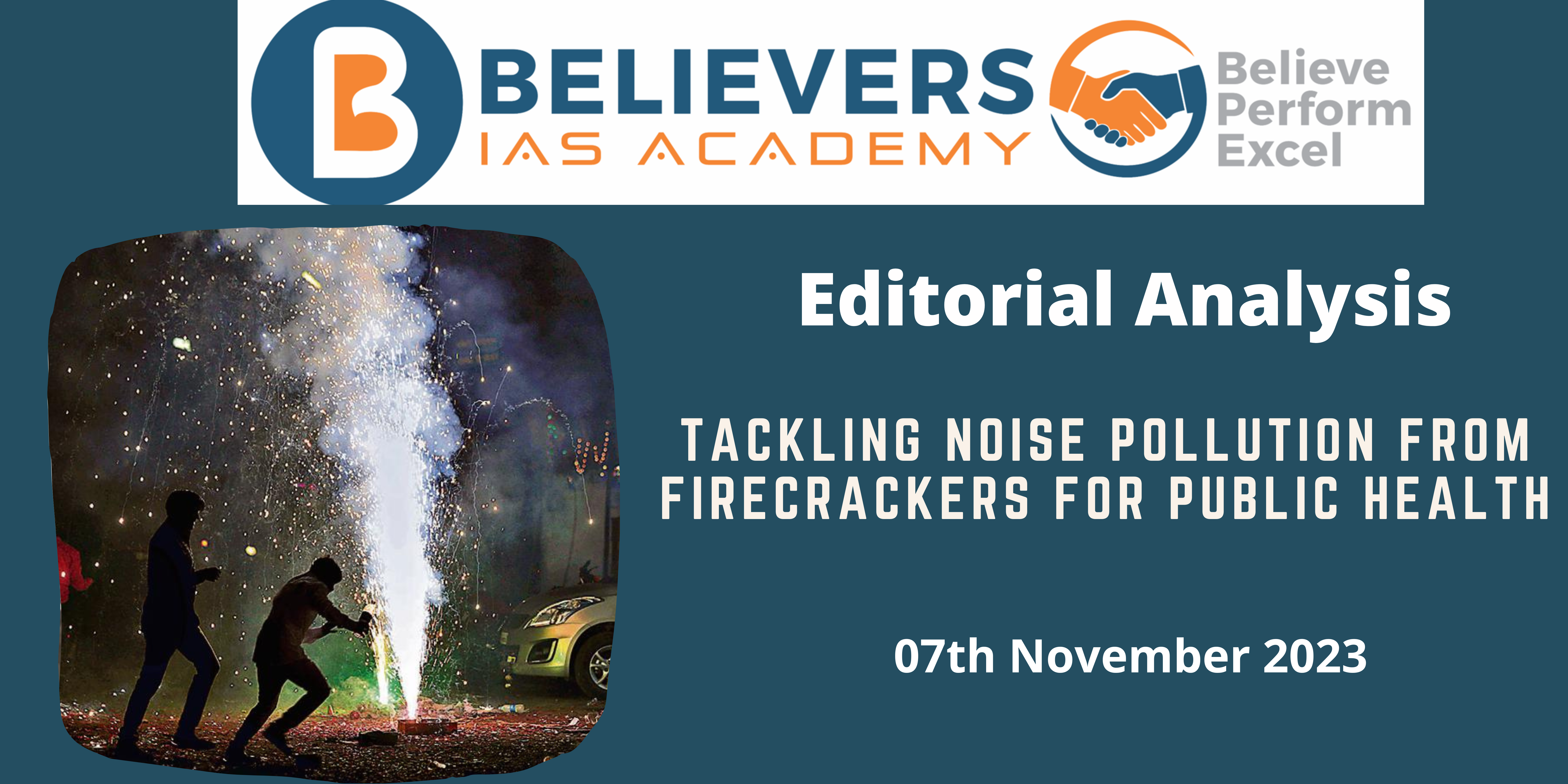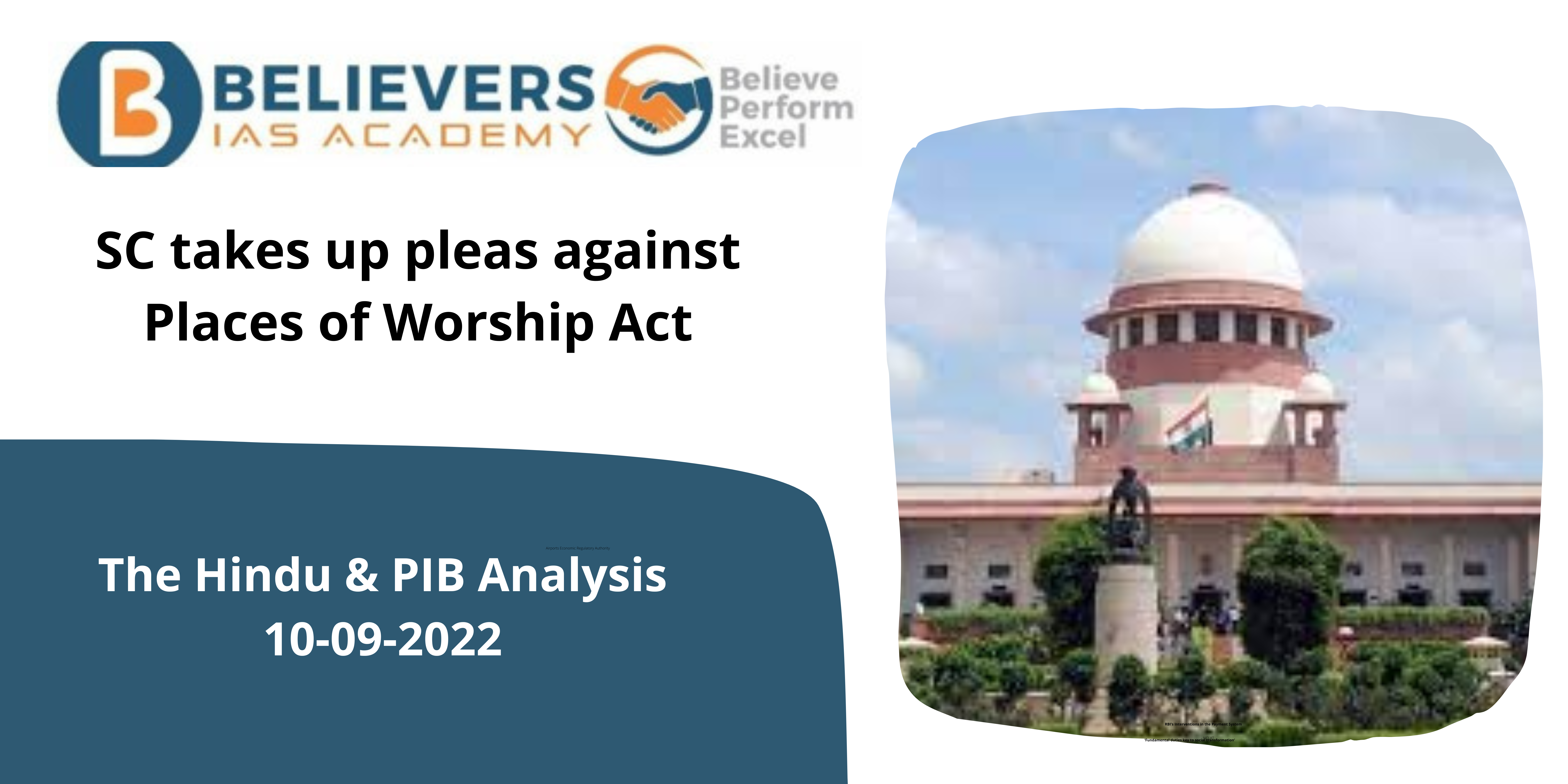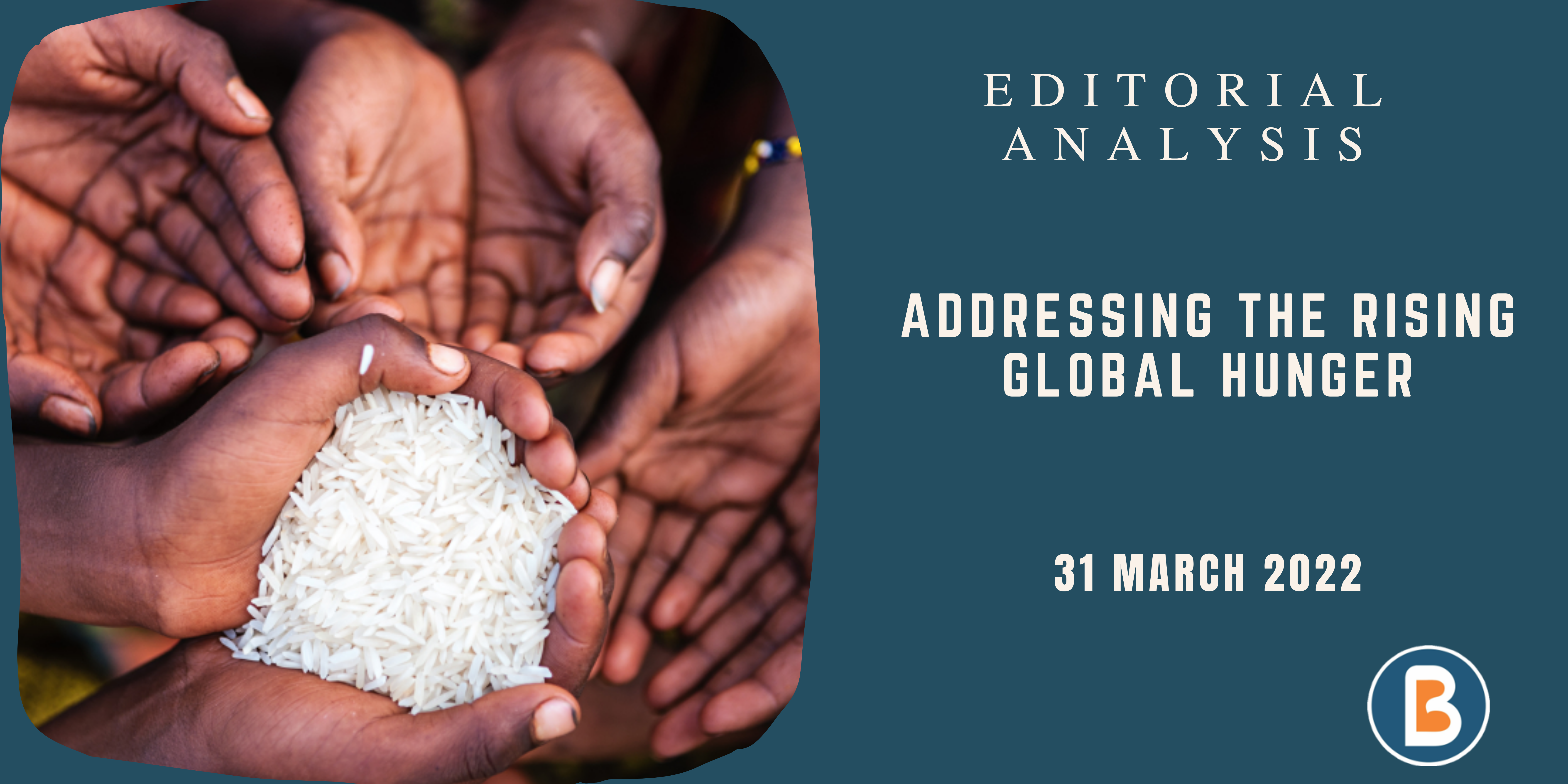Tackling Noise Pollution from Firecrackers for Public Health
Context:
Amidst the celebrations of the ‘festival of lights,’ the unbridled use of firecrackers threatens to transform it into a ‘festival of noise.’
Background:
While fireworks symbolize joyous occasions globally, many are not only noisy but also release harmful fumes when ignited.
- In 2018, efforts were made to introduce ‘green’ crackers with reduced toxicity and noise. Statutory bodies mandated their use, and regulations exist to control firecracker noise levels.
- However, noise pollution during festivities and beyond remains a pressing issue, causing adverse health effects.
- To address this, governments need to curtail the production of non-compliant firecrackers and cities should enhance noise data accessibility and adopt noise reduction targets.
Relevance:
GS – 2, GS – 3 (Environmental Pollution & Degradation, Government Policies & Interventions)
Prelims:
Green crackers, SWAS, STAR, SAFAL, PESO
Mains Question:
Considering the public health implications of noise pollution caused by firecrackers during festivals, suggest the need for stronger enforcement and noise reduction measures that helps both the society and the environment. (250 words)
Dimensions of the Article:
- The Challenge of Noisy Celebrations
- Understanding the Health Impacts of Noise Pollution
- Inadequacies in Regulation and Enforcement
- The Imperative for Comprehensive Noise Mitigation
The Challenge of Noisy Celebrations:
- While efforts to introduce ‘green’ crackers with reduced noxious emissions have been made, the problem of noisy festivities persists.
- Regulations like the Noise Pollution (Regulation and Control) Rules 2000 restrict the use of firecrackers in ‘silence zones’ and after 10 p.m. Moreover, they specify noise limits for different areas, using the decibel (dB) scale and the Leq (time-average) designation.
- The rules also permit citizens to register complaints if noise levels exceed prescribed limits.
Understanding the Health Impacts of Noise Pollution:
- The effects of noise pollution on public health are profound. Research has revealed links between high noise levels and sleep disturbances, tinnitus, stress, anxiety, hearing impairment, and cardiovascular issues.
- Noise levels above 80 dB(A) have been associated with hypertension in office environments, while noise exceeding 50 dB(A) at night can elevate cortisol levels, causing further health problems.
- The constant honking in traffic-congested cities contributes to elevated noise levels, negatively impacting the well-being of residents.
Inadequacies in Regulation and Enforcement:
- The existing rules, though well-intentioned, have various shortcomings. The decibel scale’s logarithmic nature means that a mere 10 dB increase represents a tenfold surge in sound pressure, often reaching harmful levels.
- Noise thresholds vary for different areas, and the boundaries between residential and commercial zones are often blurred.
- Ambiguity surrounds the sanctions for violating noise limits, and enforcement remains lackluster.
- Focusing on minor enhancements to firecrackers before each festival is a distraction from the overarching problem—noise pollution in India.
The Imperative for Comprehensive Noise Mitigation:
- To combat noise pollution and its associated health risks effectively, a more proactive approach is needed.
- Governments must take measures to prohibit the production of non-compliant firecrackers entirely.
- In parallel, cities should enhance public access to noise data and establish noise reduction targets. This approach necessitates clear delineation of different loudness zones, improved enforcement of noise regulations, and public awareness campaigns on the harmful effects of noise pollution.
- Effective noise mitigation will require a collective effort from both authorities and citizens.
Way forward:
- Addressing the public health crisis of noise pollution, especially during festive seasons, necessitates stringent enforcement of existing regulations and comprehensive noise mitigation measures.
- To prevent the production of violative firecrackers and curtail noisy celebrations, government intervention is indispensable. Cities must also prioritize noise data accessibility, delineate loudness zones, and establish clear noise reduction targets. Ultimately, the battle against noise pollution requires a concerted effort, with the well-being of the public at the forefront.
- By taking these measures, we can ensure that the ‘festival of lights’ remains a true celebration of joy, without descending into a ‘festival of noise.’




